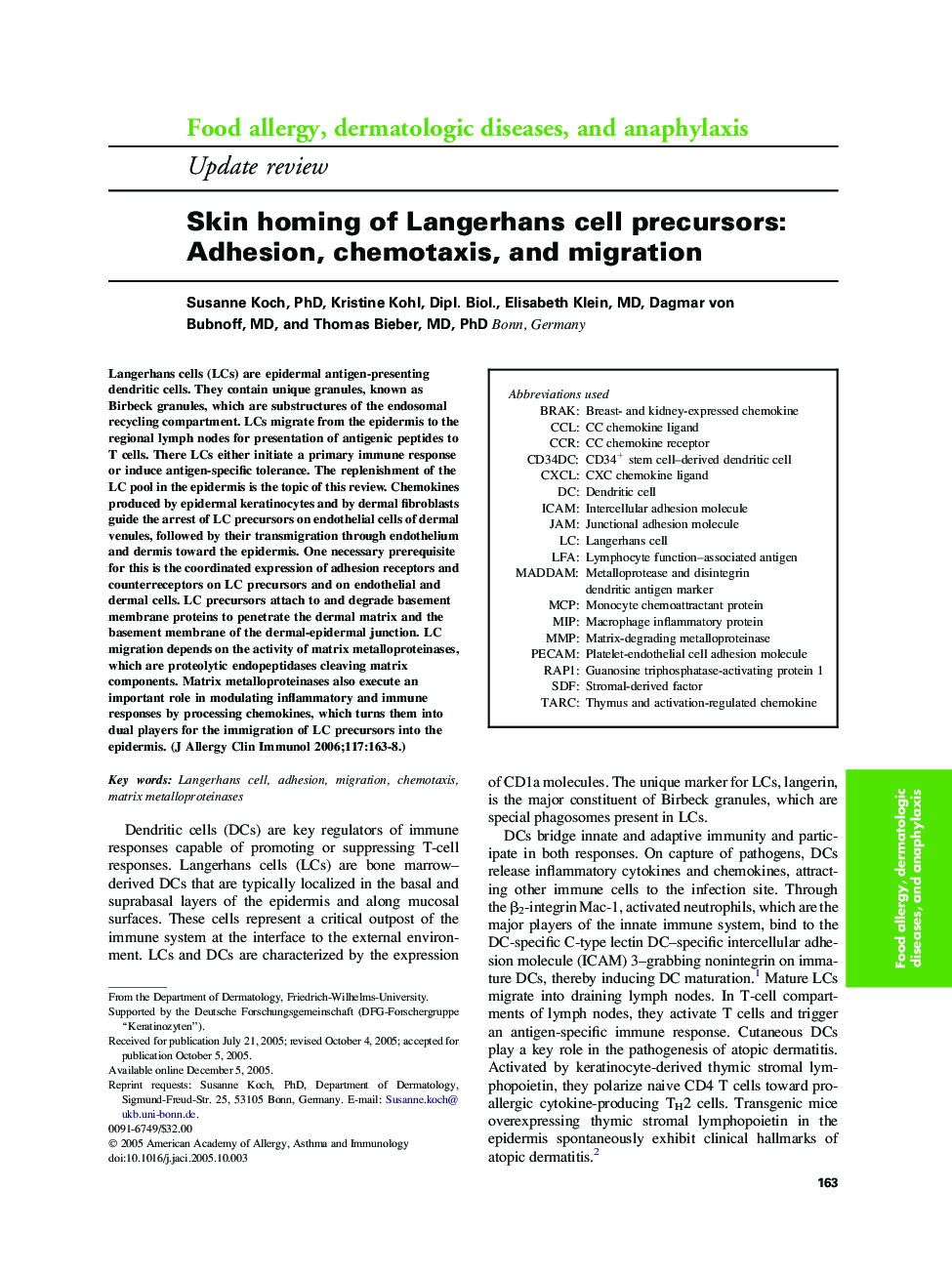| Article ID | Journal | Published Year | Pages | File Type |
|---|---|---|---|---|
| 3203852 | Journal of Allergy and Clinical Immunology | 2006 | 6 Pages |
Langerhans cells (LCs) are epidermal antigen-presenting dendritic cells. They contain unique granules, known as Birbeck granules, which are substructures of the endosomal recycling compartment. LCs migrate from the epidermis to the regional lymph nodes for presentation of antigenic peptides to T cells. There LCs either initiate a primary immune response or induce antigen-specific tolerance. The replenishment of the LC pool in the epidermis is the topic of this review. Chemokines produced by epidermal keratinocytes and by dermal fibroblasts guide the arrest of LC precursors on endothelial cells of dermal venules, followed by their transmigration through endothelium and dermis toward the epidermis. One necessary prerequisite for this is the coordinated expression of adhesion receptors and counterreceptors on LC precursors and on endothelial and dermal cells. LC precursors attach to and degrade basement membrane proteins to penetrate the dermal matrix and the basement membrane of the dermal-epidermal junction. LC migration depends on the activity of matrix metalloproteinases, which are proteolytic endopeptidases cleaving matrix components. Matrix metalloproteinases also execute an important role in modulating inflammatory and immune responses by processing chemokines, which turns them into dual players for the immigration of LC precursors into the epidermis.
